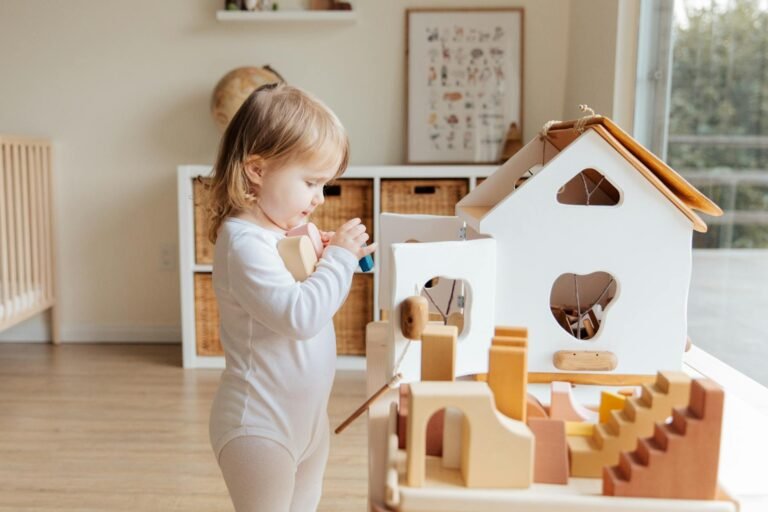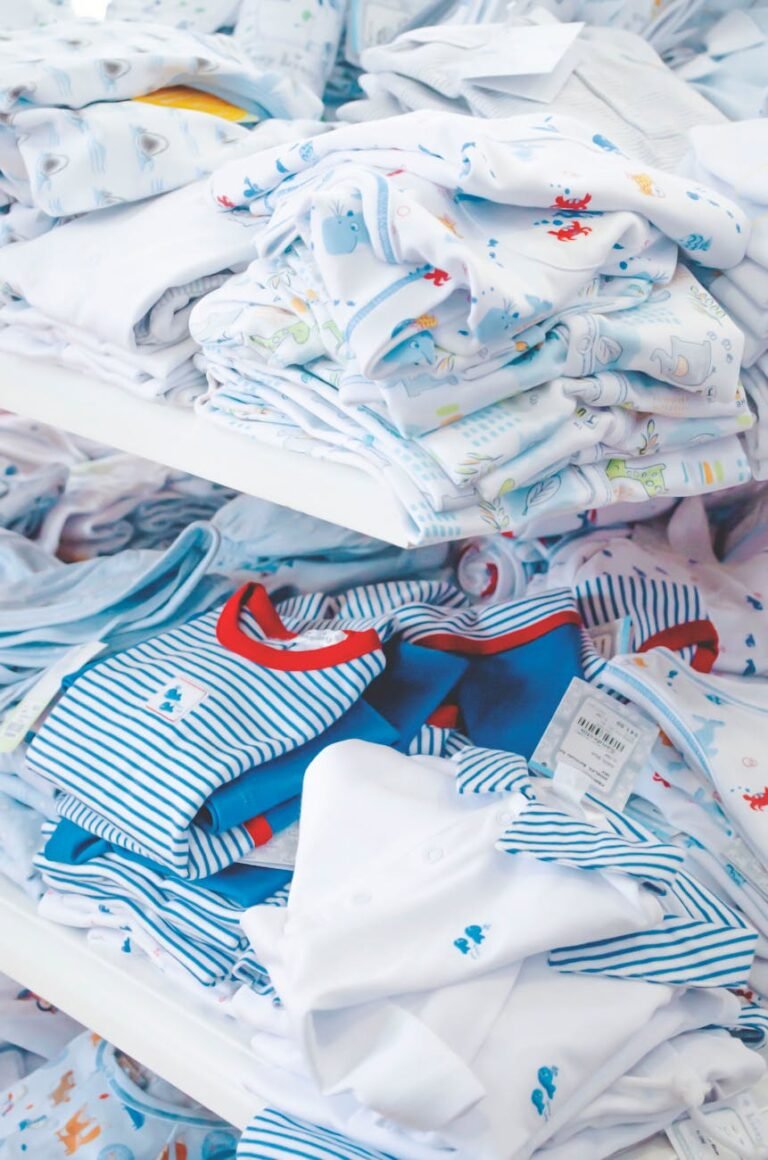Have you ever wondered why swaddling can change your newborn’s sleep almost instantly?
Swaddling is more than a tradition. It’s backed by science to soothe newborns and improve sleep. We’ll show you how to swaddle your baby safely and comfortably. This guide is for new parents and those who want to improve their swaddling skills.
Swaddling can help your baby sleep longer and better. Swaddle blankets are usually 40 to 48 inches square. They fit different baby sizes well. Stop swaddling when your baby starts rolling over, usually around 4-6 months.
We’ll talk about the best swaddle techniques and how to pick the right blanket. We’ll also cover common mistakes like wrapping too tight. The right swaddle can make your baby feel safe and comfortable, just like in the womb.
Key Takeaways
- Swaddling can soothe newborns and promote better sleep by reducing the moro reflex.
- Proper swaddling techniques are crucial to avoid risks like overheating and hip dysplasia.
- Choosing the right swaddle blanket involves considering size, material, and safety features.
- Swaddling should generally be discontinued when the baby shows signs of rolling over, around 4-6 months.
- Alternative sleeping options like sleep sacks can offer a secure environment post-swaddling.
Join us as we explore the art of swaddling. We’ll make sure your baby gets the calm, secure sleep they need.
What is Swaddling?
Swaddling wraps babies snug in blankets, giving them warmth and security. It feels like being back in the womb, helping them sleep better.
Definition of Swaddling
Swaddling is a way to keep babies snug with blankets. It stops them from moving too much. This helps them sleep longer and cry less.
It also stops the moro reflex, a startle response. This makes babies more comfortable and helps parents too.
History and Origins
Swaddling has been around for centuries, across many cultures. It made babies feel safe and secure. From ancient Greeks to Native American tribes, it was always about comfort and sleep.
Today, we use safer materials and follow new rules. This keeps babies cozy and safe.
| Aspect | Details |
|---|---|
| Swaddling Definition | Wrapping infants snugly in a blanket to restrict movement and mimic the womb. |
| Newborn Care Techniques | Practices like swaddling that promote better sleep and reduce startle reflex. |
| Origins of Swaddling | Historical practice across cultures aimed at ensuring infant safety and comfort. |
Swaddling is key in caring for newborns. It helps them adjust to the outside world. It also makes sleep better and eases stress for parents.
Benefits of Swaddling Your Baby
Swaddling your baby has many benefits. It helps you and your baby sleep better. Let’s look at how swaddling can be really good for you.
Enhanced Sleep Quality
Swaddling helps babies sleep better. Studies show swaddled babies are quieter and sleep more than others. This is because the swaddle feels like the womb, making them feel safe and warm.
Reduced Startle Reflex
Swaddling also helps with the Moro reflex in babies. This reflex can make babies jerk and wake up. A tight swaddle keeps these movements small, so babies can sleep without being disturbed.
Calming Effect
Swaddling has a calming effect on babies. They feel safe and cozy when wrapped up. This makes them less fussy and helps them sleep better, making everyone happy.

| Benefits | Explanation | Statistics |
|---|---|---|
| Better Sleep for Babies | Swaddling mimics the womb, providing warmth and security. | Studies show swaddled babies sleep longer and quieter. |
| Reducing Moro Reflex in Infants | A snug swaddle minimizes sudden jerks that wake babies. | Affects infants up to 3-4 months of age. |
| Calming Effect | Swaddling helps reduce fussiness and promotes a sense of safety. | Babies feel secure and comforted, leading to less crying. |
How to Choose the Right Swaddling Blanket
Choosing the right swaddle blanket is key for your baby’s comfort and safety. Look for several important factors when picking.
Material Considerations
Soft, breathable, and gentle materials are best for swaddle blankets. Cotton, muslin, and bamboo are great for baby skin. They keep your baby cool and comfortable.
Natural materials like organic cotton or bamboo are best for sensitive skin. They prevent irritation and help your baby sleep well.
Size and Fit
It’s important to pick the right size swaddle blanket for your baby. The blanket should be snug but not too tight. It should leave 2-3 fingers’ width between your baby’s chest and the blanket.
As your baby grows, they may need bigger blankets. Look for ones that can adjust to fit your baby’s changing size. The right size is key for safe swaddling.
Types of Swaddling Blankets
There are many types of swaddling blankets. Traditional ones are classic, while modern ones with Velcro or snaps are easier to use. Each has its own benefits.
Choosing a transitional swaddle can be helpful as your baby starts to roll. It still keeps them cozy and secure.
Safety Features
Safe swaddling means choosing blankets that follow the American Academy of Pediatrics (AAP) guidelines. Look for ones that prevent suffocation risks from loose fabrics. Velcro or zipper swaddles are safer than traditional ones.
Watch for signs of overheating, like sweating or flushed cheeks. Choose breathable materials to avoid these risks. Always make sure your baby’s legs can move freely for hip health.

How to Swaddle a Baby with a Blanket: Step-by-Step Guide
Swaddling is a soothing way to comfort newborns. It helps prevent the startle reflex. We’ll show you how to swaddle a baby safely and effectively.
Setting Up the Swaddling Area
First, make sure your swaddling area is safe. Here’s how:
- Choose a flat, clutter-free surface for the blanket.
- Keep the room quiet with few distractions.
- Place the blanket in a diamond shape and fold down the top corner about 6 inches.
Positioning Your Baby
Now, get your baby ready:
- Lay your baby on their back with their head above the folded corner of the blanket.
- Align the folded edge of the swaddle with the top of your baby’s ears.
- Make sure your baby is calm and comfortable before you start.
The American Academy of Pediatrics says always place your baby on their back. This helps prevent Sudden Infant Death Syndrome (SIDS).
Wrapping Techniques
Now, let’s look at how to wrap your baby securely and comfortably:
- Start by tucking one arm down by the baby’s side, pulling the blanket across their chest and under their body. Make sure it’s snug but not too tight.
- Do the same with the other arm, ensuring the blanket crosses the baby’s chest and is secured underneath.
- Fold the bottom of the blanket up over your baby’s feet, leaving enough room for hip movement to prevent hip dysplasia.
- Make sure the swaddle is snug but loose enough to fit 2 to 3 fingers between the blanket and the baby’s chest for proper breathing.
With practice, you’ll get good at swaddling. You’ll know your baby is safe and warm. For more help, check out the HALO Sleep Guide for detailed swaddling tips.
Common Swaddling Mistakes to Avoid
Swaddling is key for your baby’s health and comfort. But, there are common mistakes parents make. Knowing these can help keep your baby safe and avoid errors.
Wrapping Too Tight
Wrapping the blanket too tightly is a big mistake. It might seem like a snug wrap is comforting. But, it can stop breathing and movement, causing discomfort or health problems.
Research shows 1 in 4 parents wrap too tightly. This can limit movement and breathing. For safe baby swaddling, the blanket should be snug but not too tight.
Incorrect Arm Positioning
Swaddling with arms down is another mistake. It can be a safety hazard and affect development. Arms should be across the chest or in a natural position.
Preemies need their arms at their chest. Swaddling arms in can help babies sleep better. It reduces waking from scratching or jerky movements.
Overheating Risks
Overheating is very dangerous. It’s important to watch the room’s temperature and the baby’s body heat. The ideal nursery temperature is 68-72 degrees Fahrenheit.
About 40% of parents don’t check their baby’s skin temperature. This increases the risk of overheating. Overheating can raise the risk of SIDS by 3-5 times in swaddled babies.

| Common Mistake | Impact | Recommendation |
|---|---|---|
| Wrapping Too Tight | Restricts breathing, limits movement | Wrap snugly but allow some freedom of movement |
| Incorrect Arm Positioning | Discomfort, developmental issues | Position arms across chest or in a natural position |
| Overheating Risks | Increased risk of SIDS | Maintain room temperature between 68-72 °F |
Knowing these common mistakes helps keep your baby safe and comfortable. Make sure the wrap isn’t too tight, position the arms right, and watch the temperature. These steps are key for safe baby swaddling and avoiding errors.
When to Stop Swaddling Your Baby
Knowing when to stop swaddling is key for your baby’s growth and safe sleep. Most babies are ready to stop swaddling between 2 to 4 months. The American Academy of Pediatrics (AAP) says babies usually roll over around 3 to 4 months. This makes swaddling unsafe.
Signs it’s time to stop swaddling include your baby trying to roll over, which starts around 3 to 4 months. This is important because a swaddled baby who rolls over may face suffocation risks. They can’t push up from the mattress with their hands.
Other signs your baby might be ready to stop swaddling include:
- Breaking out of the swaddle during active sleep.
- Overtiredness leading to the baby breaking free, signaling a need for attention to sleepy cues and wake windows.
- Growth and increased strength making it difficult to keep the baby safely swaddled.
Experts suggest different ways to stop swaddling. Some babies do well with a gradual approach, like swaddling with one arm out first. Then, both arms out, and eventually, no swaddling. Others might adjust better to stopping cold turkey or using transitional sleep sacks.

It’s crucial to watch your baby’s development and adjust sleep practices. Ensuring your baby’s safety during sleep means knowing when to stop swaddling. Swaddling is safe in the early months but can be risky and slow down your baby’s motor skills later.
Swaddling Alternatives
As babies grow, they need different things for comfort and safety. Looking into other options than swaddling is key. These alternatives help babies move more and grow well.
Sleep Sacks
Using sleep sacks is a great choice instead of swaddling. Sleep sacks keep babies warm but don’t get in the way like loose blankets do. They let babies move their arms and hips more, which is good as they get more active.
Swaddle Transition Products
Swaddle transition products are also good for those looking for alternatives to swaddling. Items like the Zipadee-Zip give a cozy feel like swaddling but let babies move more. They have a special design for the legs and feet to help with hip health. These products can change to fit the baby’s needs as they grow.
Co-Sleeping Considerations
For some, safe co-sleeping is part of their bedtime routine. But, it’s important to make sure it’s safe. Using a co-sleeping bassinet or crib is a good idea. It keeps the baby safe and gives them room to sleep well.
Safety Tips for Swaddling
Swaddling can make your baby feel cozy. But, it’s important to do it safely. Here are some tips to keep your baby safe while swaddling.
Temperature Regulation
Keeping your baby’s temperature right is key. Too hot can raise the risk of SIDS. Make sure the room is cool and avoid too many blankets.
Use a thermometer to check the temperature. Also, watch for signs of too much heat, like sweating. These steps help keep your baby safe and comfy.
Monitoring for Hip Dysplasia
Swaddling safely also means avoiding hip dysplasia. This is when a baby’s hips don’t form right. Don’t wrap their legs too tight.
Instead, let their legs move a bit. The International Hip Dysplasia Institute suggests a “frog” position for their legs. This helps their hips grow right. Always check how their hips are in the swaddle.
Ensuring a Safe Sleep Environment
Creating a safe sleep area is important. Always put your baby on their back to sleep. This lowers SIDS risk.
Keep the crib clear of things that could suffocate your baby. Use firm mattresses and sheets that fit well. These steps help make a safe and cozy sleep space for your baby.
Swaddling Techniques for Different Ages
Swaddling changes a lot as your baby grows. It’s important to know how to adjust it for comfort and safety. Let’s look at newborn swaddling and how it changes as your baby gets older.
Newborn Swaddling Techniques
Newborns love a snug swaddle. It feels like the womb and calms them down. When we talk about newborn swaddling, we want it snug but not too tight. It should not block their breathing or movement.
- Use a lightweight, breathable fabric to prevent overheating.
- Ensure the swaddle is snug around the midsection but leaves the upper chest and neck uncovered.
- Leave enough room for the baby’s hips to move freely, reducing the risk of hip dysplasia.
- Keep their arms inside the swaddle to help reduce the startle reflex.
Swaddling for Older Babies
As babies grow, their swaddling needs change. The American Academy of Pediatrics says to stop swaddling when your baby starts rolling over. This is usually between 3 to 5 months. Here are some tips for adjusting swaddling technique as your baby ages:
- Transition to looser swaddles, around the arms and hips, to let them move more.
- Think about using sleep sacks or swaddle transition products. They let your baby move more but still feel secure.
- Watch your baby closely. If they’re trying to break free or seem uncomfortable, it’s time to stop swaddling.
Remember, swaddling by age means knowing your child’s growth stages. By adjusting your swaddling, you keep your baby comfy and safe in their early months.
Choosing the Best Material for Your Baby’s Swaddle
Choosing the right material for your baby’s swaddle is key for their comfort and safety. Studies show that breathable materials like cotton or muslin help babies sleep better. Muslin, used by brands like Aden and Anais, is popular for being light and breathable.
This keeps your baby cool and cozy, reducing the chance of them getting too hot.
Cotton and Organic Options
Cotton is the top pick for swaddling blankets because it’s soft and breathable. If you want organic options, organic cotton or bamboo are great. Organic swaddles are free from harsh chemicals, making them safer for your baby’s skin.
Bamboo is also becoming more popular. It’s natural, antibacterial, and wicks moisture well, helping control temperature.
Breathable Fabrics
Muslin and bamboo are the best for breathable swaddling blankets. Muslin swaddles, like those from Aden and Anais, are light, preventing overheating. Bamboo swaddles are also great because they breathe well and absorb moisture.
This makes bamboo swaddles perfect for keeping your baby at a comfortable sleep temperature.
In the end, pick a swaddle material that’s breathable, soft, and safe. This ensures your baby gets a good night’s sleep in a healthy environment.
FAQ
What is swaddling?
Swaddling wraps babies in a blanket to keep them snug. It helps them feel secure and warm, like in the womb. It’s used to help babies sleep better.
What are the benefits of swaddling your baby?
Swaddling helps babies sleep better by reducing the startle reflex. It also makes them feel calm, like in the womb.
How do I choose the right swaddling blanket for my baby?
Choose a soft, breathable blanket like cotton or bamboo. Make sure it’s the right size for your baby. You can pick a traditional blanket or a modern one with fasteners.
How do I safely swaddle my baby using a blanket?
Start with a flat surface. Place your baby on their back with their head above the blanket’s corner. Wrap them snugly but not too tight, so they can move their hips.
What are common swaddling mistakes to avoid?
Avoid wrapping too tight, which can hurt breathing and movement. Also, don’t wrap arms wrong, as it can cause discomfort. Keep an eye on your baby’s temperature to avoid SIDS.
When should I stop swaddling my baby?
Stop swaddling when your baby can roll over, usually between 4 to 6 months. Swaddling too long can harm their development and increase suffocation risk.
What are some safe swaddling alternatives?
Use sleep sacks for older babies or swaddle transition products. If co-sleeping, use a co-sleeping bassinet and follow safety rules.
How can I ensure my baby’s safety while swaddling?
Check your baby’s temperature often to avoid overheating. Make sure their hips are placed right to prevent dysplasia. Keep the sleep area safe from loose bedding and toys. Always place your baby on their back to sleep.
What swaddling techniques are recommended for different ages?
Newborns need a snug wrap to soothe the startle reflex. As they grow, loosen the swaddle to let them move more.
What is the best material for a baby’s swaddle?
Use high-quality, breathable fabrics like cotton or bamboo. Organic options are safe for your baby’s skin, making for a comfortable sleep.




